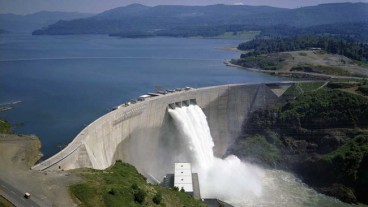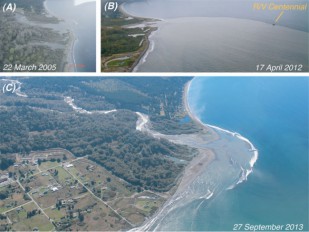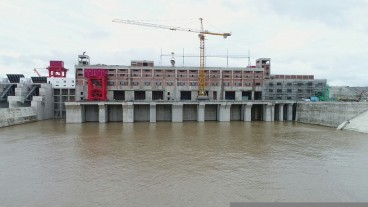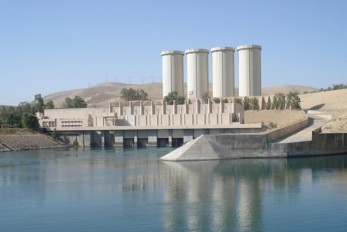
A study performed by the U.S. Geological survey and published in Science reveals that rivers respond quickly to dam removal. In the past forty years, more than 1000 dams have been removed from US rivers due to safety concerns, sediment buildup, and inefficiency. According to Jim O’Connor, a geologist with the U.S.G.S. and lead author of the study, “rivers quickly erode sediment accumulated in former reservoirs and redistribute it downstream, commonly returning the river to conditions similar to those prior to impoundment." Because of this, more and more dams are coming down as a means of river restoration.
A study performed by the U.S. Geological survey and published in Science reveals that rivers respond quickly to dam removal. In the past forty years, more than 1000 dams have been removed from US rivers due to safety concerns, sediment buildup, and inefficiency. According to Jim O’Connor, a geologist with the U.S.G.S. and lead author of the study, “rivers quickly erode sediment accumulated in former reservoirs and redistribute it downstream, commonly returning the river to conditions similar to those prior to impoundment." Because of this, more and more dams are coming down as a means of river restoration.
A national effort is underway between several US agencies and universities to better understand and document the effects of dam removal. A major finding is that river channels stabilize within only months or years after dam removal. Fish and other biological factors seem to respond quickly as well. Migratory fish especially will move upstream and utilize the habitat that was previously inaccessible.
As the number of dam removals increase both in the US and overseas, this effort to understand the consequences of dam removal becomes more pressing. Scientists seek to use the information gathered to guide dam removals in the future. "As existing dams age and outlive usefulness, dam removal is becoming more common, particularly where it can benefit riverine ecosystems," said Gordon Grant, Forest Service hydrologist. "But it can be a complicated decision with significant economic and ecologic consequences. Better understanding of outcomes enables better decisions about which dams might be good candidates for removal and what the river might look like as a result."
Sources: EurekAlert.org, American Rivers
Sources: EurekAlert.org, American Rivers
Want to read more like this story?

Savings in removing over repairing dams
Jul, 09, 2018 | NewsDam removal has become a mainstream option for dam safety management restoring river, coastal ecosys...

From Aging Infrastructure to Extreme Rainfall: The Growing Importance of Dam Structural Engineering
Oct, 07, 2024 | NewsDams have been integral to human civilization for centuries, playing critical roles in water storag...

Largest dam removal in US history reaches important milestone
Jan, 11, 2024 | NewsThe largest dam removal in the history of the United States is currently taking place on the Klamat...

Elwha River Project: learn about the effects of the largest dam removal in the U.S. history!
Feb, 19, 2015 | NewsFive peer-reviewed papers written by government, tribal and university researchers, scientifically e...

Harms Mill Dam area closed during restoration work in tennessee
Oct, 15, 2025 | NewsThe Tennessee Wildlife Resources Agency (TWRA) has announced a closure of the Harms Mill Dam area a...

Study shows that hydropower dams reduce the temperature of rivers
Mar, 06, 2020 | NewsA new study, published in the Environmental Research Letters journal, focuses on the impact of hydr...

Potential Mosul Dam Failure Puts Millions at Risk
May, 23, 2016 | NewsThe Mosul Dam on the Tigris River in northern Iraq is the largest Dam in the country and provides po...

India sets plan to create world’s longest river to reduce floods and droughts
Jan, 17, 2017 | NewsScientists warn about serious consequences on ecosystems and coastlines Scientists warn about ser...

40 years after Kelly Barnes dam failure
Nov, 06, 2017 | NewsOn this day in 1977, a small embankment dam located above Toccoa Falls Bible College in Georgia fail...
Trending

Vertical gardens in Mexico City to combat pollution

Saudi Park Closed After 360 Big Pendulum Ride Crashes to Ground, 23 injured

Characteristics of Load Bearing Masonry Construction

Taipei 101’s impressive tuned mass damper

Dutch greenhouses have revolutionized modern farming

Federal court rules Biden’s offshore drilling ban unlawful


